Freestyle like rowing: A detailed guide to boosting speed by pushing the water
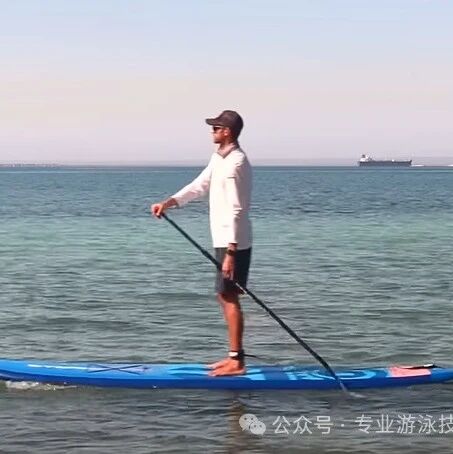
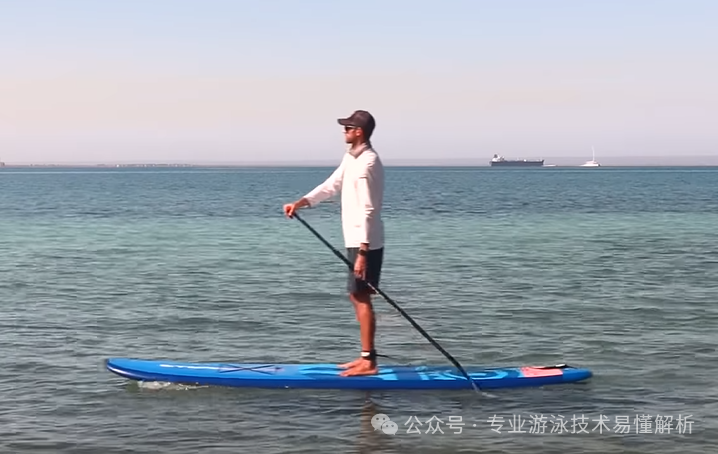
When first learning freestyle, breathing and kicking are often considered the two most challenging aspects of mastering the stroke. However, once you’ve mastered the techniques of balance and symmetry, swimming freestyle becomes incredibly comfortable. In fact, as you glide effortlessly through the water, you may even start to forget about consciously focusing on your breathing or kicking altogether.
Breathing naturally blends into the rhythmic motion of turning your head to push off the water, while kicking seamlessly integrates with the fluid rotation—or stable hip movement—of your body. There’s no need to remind yourself when it’s time to breathe or which leg to kick; instead, your body instinctively flows in perfect harmony.
Before you know it, your entire body feels like a well-oiled machine, propelling you forward with effortless precision. It’s as if your body itself has become the shuttle in a loom, weaving smoothly through the water. Time seems to race by, yet you remain fully present, immersed in the sensation of moving effortlessly ahead.
This experience mirrors the exhilarating rush of gliding down a slide as a child—those three simple joys: sliding down the slide, teetering on the seesaw, and swinging high on the swing—all tied together at their core. In fact, many of life’s greatest pleasures can be traced back to these fundamental childhood experiences.
How can you take your freestyle swimming to the next level? It’s about continuously improving in balance and symmetry. Once these elements reach a certain mastery, freestyle becomes more than just the rhythmic, alternating motion of your arms—instead, it transforms into a fluid, coordinated dance of timing, much like rowing with a single oar. In this refined technique, you don’t paddle with brute force; instead, you conserve energy for the next stroke while allowing yourself brief moments of relaxation during the pauses between strokes. At this advanced stage, your focus shifts dramatically: you start paying close attention to how far each stroke propels the boat forward, whether the bow is drifting off course, whether your entire body—or just your arms—is doing the work, and even whether the blade stays perfectly aligned against the side of the boat or drifts too far away. As you tackle these subtle yet critical details one by one, your rowing technique naturally evolves, effortlessly lifting your performance to an entirely new level.
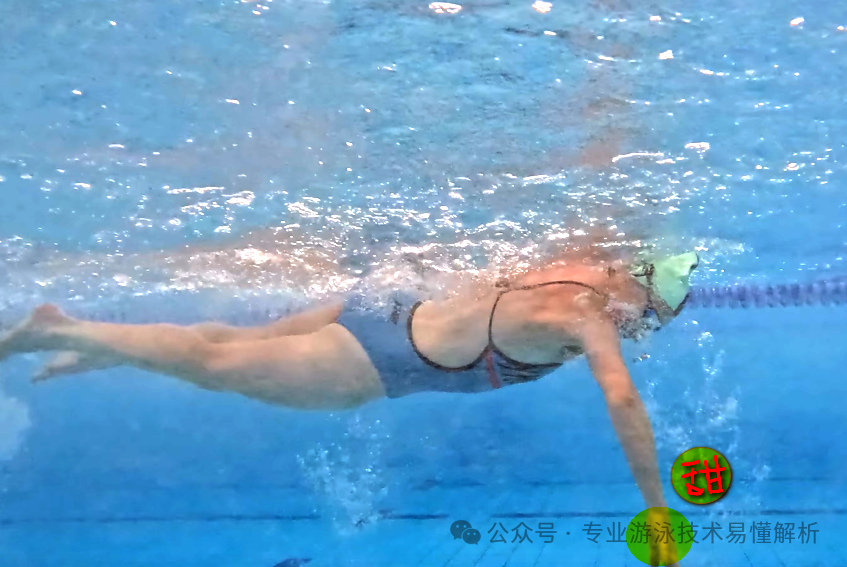
Hugging the water is like fully submerging the paddle blade in water while rowing—think of it as scooping water with the curve of your arm during freestyle. If the angle between your upper and lower arms becomes too wide, you’ll inevitably lose grip on the water. Moreover, throughout the push phase, it’s crucial to maintain that "hugging" sensation. Some swimmers may execute a solid catch-and-hold motion, but when they widen their arm bend during the push, all the water they’ve gathered simply slips away. As a result, only the palm remains effectively catching the water, making it impossible to swim efficiently or quickly.
Master the feel of scooping up the water, combined with an efficient pull-through path—once you’ve got that down, it’s nearly impossible to swim freestyle slowly. To further increase your speed, you’ll need to build stronger muscles and boost your freestyle stroke frequency. As your muscle strength improves, you’ll naturally be able to push through the water faster while maintaining the same amount of water catch. Even if you don’t consciously accelerate the push, using the same force to move the same volume of water will actually reduce your oxygen consumption compared to before. This, in turn, helps lower your heart rate. Overall, these improvements will not only enhance your ability to swim faster but also make your freestyle more sustainable and efficient.
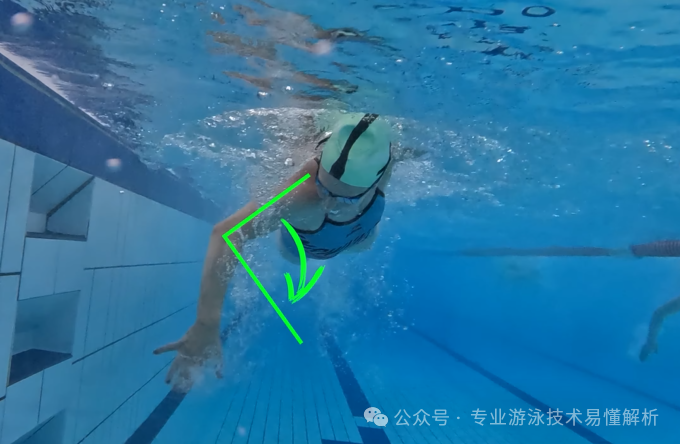
2. Pushing the water isn’t done in one motion—balancing and symmetry between the left and right sides are crucial.
The indoor pool is 50 meters long, and the outdoor pool is even more impressive—no need to expect to swim straight to the shore in one go. Just like driving, the fastest way to reach your destination is often by maintaining a steady pace throughout; cars that speed up and slow down unpredictably are usually driven by less experienced, younger drivers. When swimming freestyle, while each individual arm stroke is crucial, what truly matters most is finding the right rhythm as you alternate pushing water with each arm. This means paying close attention to the force, trajectory, and catch phase of the opposite arm during each stroke, constantly comparing how well each side is performing. If you notice any noticeable differences, make a conscious effort to even them out and ensure smooth, balanced propulsion on both sides.
Develop a sense of rhythm, paying special attention to timing—there are two key aspects:
1. The timing of the push phase on both the left and right sides. Some swimmers exhibit a noticeable difference in strength between their left and right arms, leading to inconsistent push times. Importantly, avoid having both arms simultaneously out of the push phase, as this eliminates forward propulsion and severely hampers speed improvement.
2. Turning the head to breathe inevitably disrupts the smooth flow of the push motion, often causing an extension of the push phase. Practice can help minimize this interference, allowing you to maintain efficiency and speed.
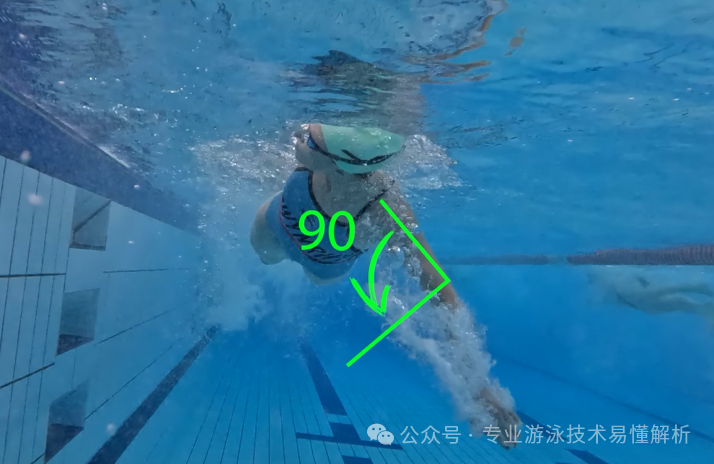
3. Push the water backward at all times—never push upward.
When paddling, the paddle blade should always face the water directly, and you lift it out of the water at the end. In freestyle swimming, however, your palm must remain squarely positioned in the water throughout the push phase—only lifting your elbow out of the water afterward.
It’s easier said than done, though, because the two pivotal points of the arm during the push—your shoulder joint and your elbow joint—both involve rotational movements. Whether it’s the entire arm pivoting around the shoulder or just the forearm rotating around the elbow, there’s always a natural tendency to twist. Yet, the key to an effective push is maintaining a consistent backward motion.
To achieve this, you should initiate the push by lifting your elbow high early on, keeping it elevated throughout the stroke. As you push, your elbow moves smoothly and steadily backward in line with your shoulder—but never beyond your back. This portion of the movement represents the "strong push distance," where the force is most powerful.
After that, your forearm straightens completely, and your palm continues to press firmly against the water, pushing backward. This second phase, though less intense, still contributes significantly to propelling you forward. Together, these two phases—the strong push and the weaker follow-through—make up the **effective push distance**, maximizing efficiency and speed in your stroke.
Many swimmers only completed the powerful pull-through phase, while either skipping the weaker pull altogether or performing it incorrectly—by rotating the forearm around the elbow joint instead of keeping the palm facing directly into the water, which leads to an upward-pushing motion rather than effective propulsion.
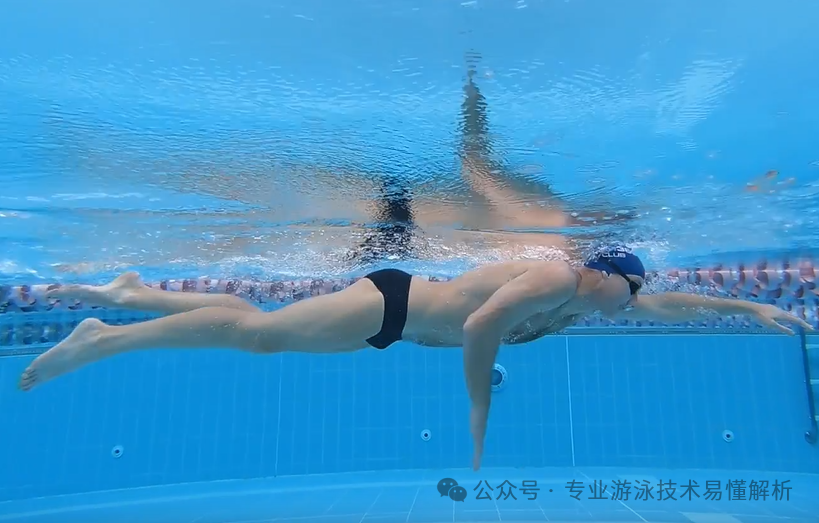
One official account shares swimming tips, while another focuses on software insights, online resources, and reading experiences.
Thank you for your supportive and encouraging likes—especially appreciated are the comments that spark conversation, as well as more shares and retweets!
Related Articles
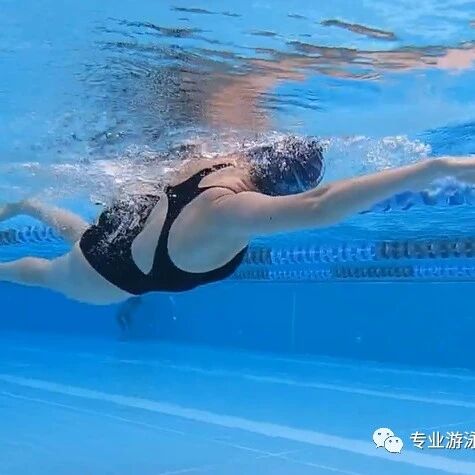
Correcting the details of the freestyle arm movement—this is the key breakthrough point for advancing from intermediate to advanced levels.
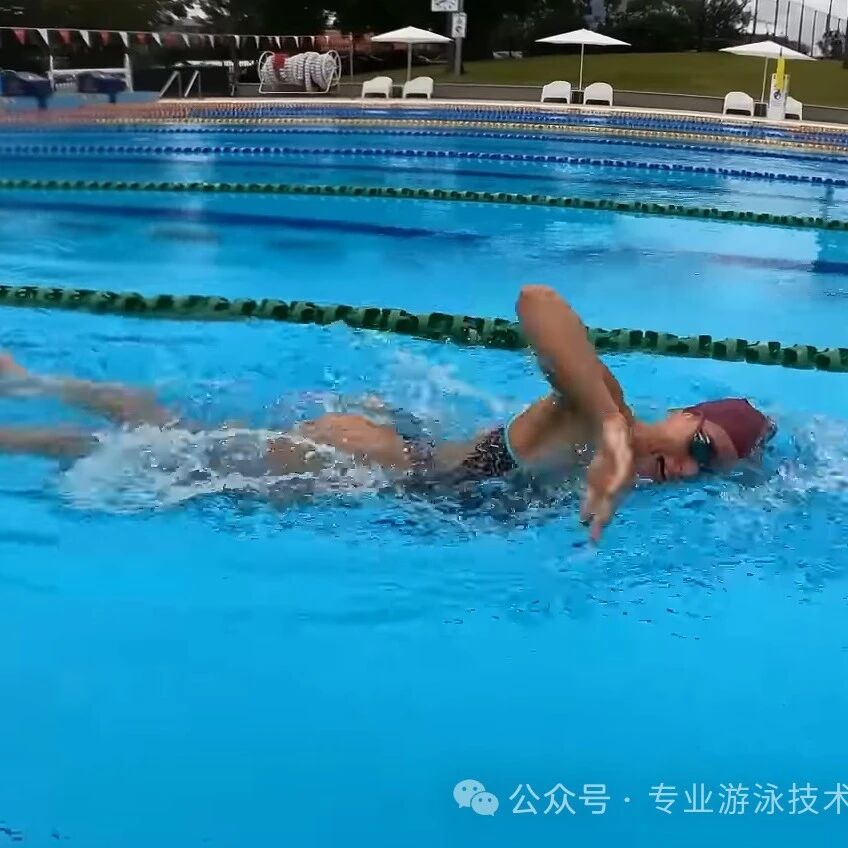
The freestyle stroke is the technique—what truly matters is the core internal skill of generating power efficiently and effectively.
